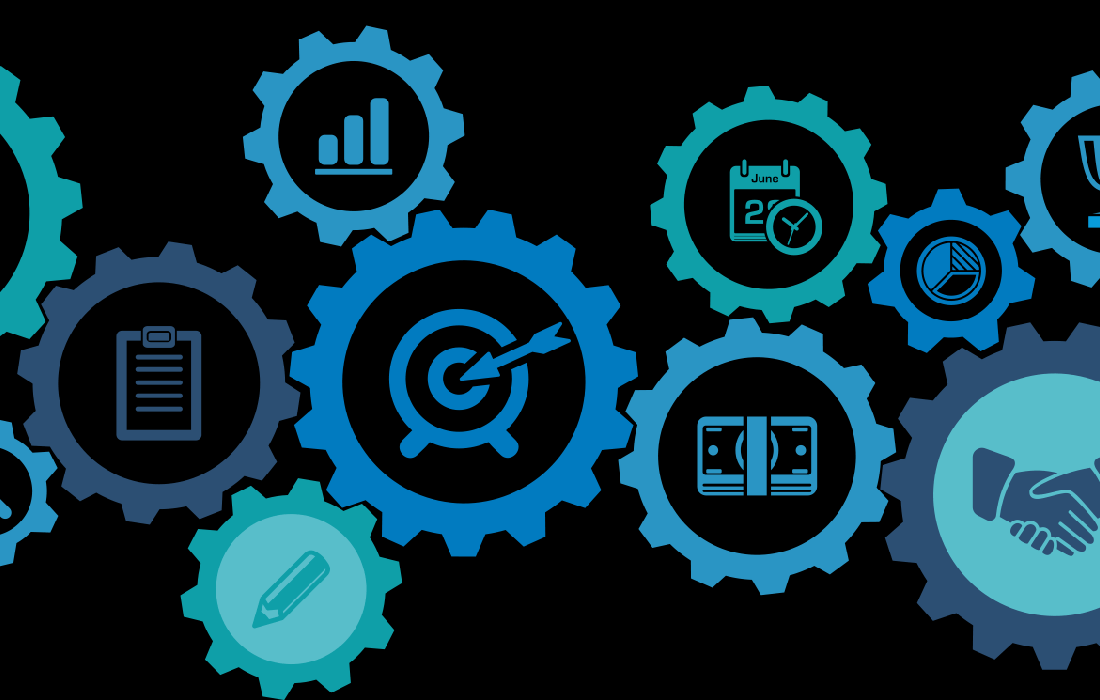Automatization is something that has already been happening for several years. In the old days, this mostly consisted of easy tasks, such as tasks that needed to be done on a conveyor belt. Nowadays, this happens more often at the office[1]. A reason for this is the rise of Machine Learning. In an older article, Machine Learning already got some attention. In this article, applications of Machine Learning as well as how it works in practice will be discussed.
Machine Learning is the principle that a machine or program can teach itself certain things, without the intervention of a human, to perform tasks better in the future. Tom Mitchell (1997) came up with the following definition of Machine Learning: A computer program is said to learn from experience E with respect to some class of tasks T and performance measure P if its performance at tasks in T, as measured by P, improves with experience E.[2]”. Simply stated, when a computer program is able to better execute its tasks by looking at data or events in the past, the program has learned from it.
Machine Learning consists of three main components. It starts with a model which makes predictions. A basic prediction has to be manually inserted by a person (a human). The predictions from the model are then compared with reality by the learner. This learner modifies the parameters of the model afterward so that the model can do a better job at predicting. These steps are then repeated until the model is accurate enough to predict properly. This process is visually presented in Figure 1.
Figure 1
To sketch a better understanding of applied Machine Learning, we present the following example. A teacher wants to know what the optimal study time is for a student in order to receive a good/sufficient grade. First, the basic model is inserted. The teacher expects a linear relationship (see figure 2).
Figure 2
When the teacher has examined and graded all exams, the teacher will ask the students how long they have learned for the exam. This information is then inserted into the system. The learner then sees that the model is not accurate and modifies the parameters to improve the predictions (see figure 3).
Figure 3
After this step, the model will come up with a new prediction of the grade of a student based on the amount of hours studied. Then, the teacher can keep on inserting new data, from which the model can learn again and adapt. This process will keep on repeating until the accuracy of the model is high enough and the estimation of the model reaches the real values.
Often times, Machine Learning is mentioned together with the combination of Artificial Intelligence (AI). There is a clear distinction between the two, however. The aim of AI is to replicate the human brain, where it needs to be able to learn, be able to have proper reasoning, and it must be able to think abstractly. Machine learning doesn’t go as far, where it only uses data from the past, with the aim to predict things. Machine learning is more related to statistics and data mining rather than AI[3].
An algorithm can learn in several ways from the available data. This depends mainly on the way the data is reachable. The different reasons of learning can, in general, be divided into three main categories.
Supervised learning means that the data is structured well as well as categorized. Because of this, the values and the connected outcomes are known, for example the amount of study-hours and the final grade as mentioned before. Another application of supervised learning is value determination for a house. To determine the value, characteristics such as the surface, location, street and energy label must be known. An algorithm can learn from this data and then perform an estimation of the value of a house[5].
Unsupervised learning also means that the data is readily available, but the data is not good (if even) structured well. Because of this, values and the outcomes cannot be connected to each other. The algorithm doesn’t know what the data means, and must therefore find connections and structure itself. An example is the learning of a language when there are no translations known. When only one fragment of a single language is listened to, no one will understand it. But when lots of fragments of a single language are listened to, patterns can be found and the language will become more understood over time.
Reinforcement learning is learning based on the choices that have been made. A choice the algorithm makes has an impact on its environment, from which it learns again. An example is a self-driving car. Because they have driven many,many hours (with or without a driver), it can determine good or bad choices.
These are the three main categories of learning. There are also methods which are a variant on or even a combination of the above mentioned learning methods. An example is semi-supervised learning, where there is access to both structured and unstructured data. This method is mostly used because the labeled data is very hard to get access to[3],[6].
Machine learning in practise
The article started with the fact that office tasks are becoming more and more automated. We speak specifically about tasks, because Machine Learning could take over parts of a job, not entire jobs by any means. An example of this would be a financial specialist. With Machine Learning, transactions may be made automatically. The specialist doesn’t have to check (as much) transactions anymore. The specialist will have to change his perspective to look into statistical insights. The odds are high that the task of manually inserting invoices is something of the past[2].
The healthcare sector also uses Machine Learning more and more. At the oncological department of a hospital in New York cancer patients and possible treatments from previous years are being looked at. With this information, an algorithm learns to prescribe the correct treatments. Machine Learning helps the doctor in this example.
Google is also an organization which is continually developing Machine Learning. Recently, they succeeded in creating an algorithm which is capable of recognizing objects in a video. Previously, tags and scènes of a video had to be inserted manually. Google has made steps to automate this[8].
Machine learning at home
Some people may think that they do not (yet) use Machine Learning in their daily life. But these people must reconsider this though; Machine Learning is being used in daily life already in plenty of examples. The mailbox is able to automatically filter spam by using Machine Learning. Recommendations in webshops are another example of self-learning algorithms. Finally, Siri is another example of Machine Learning[6].
References
[1] Gier, R. d. (2016, December 7). Robotisering bedreigt banen van hoogopgeleide financieel specialisten. Opgeroepen op Maart 2, 2017, van Management caree: https://www.managementcareer.nl/robotisering-bedreigt-banen-van-hoogopgeleide-financieel-specialisten/#
[2] Mitchell, T. (1997). Machine Learning. McGraw-Hill.
[3] Sims, G. (2015, Juli 7). What is machine learning? |Video|. Opgehaald van https://www.youtube.com/watch?v=WXHM_i-fgGo
[4] Sullivan, D. (2015, November 4). How machine learning works, as explained by Google. Opgeroepen op Maart 2, 2016, van martechtoda: https://martechtoday.com/how-machine-learning-works-150366
[5] Ng, A. (sd). Supervised learning. Opgeroepen op Maart 2, 2017, van coursera: https://www.coursera.org/learn/machine-learning/lecture/1VkCb/supervised-learning
[6] Mehryar, M., Rostamizadeh, A., & Talwalkar, A. (2012). Foundations of Machine Learning. MIT press.
[7] Faggella, D. (2016, Augustus 29). Machine Learning Healthcare Applications – 2016 and Beyond. Opgeroepen op Maart 3, 2017, van teachemergence: http://www.techemergence.com/machine-learning-healthcare-applications/
[8] Nu.nl. (2017, maart 8). Zelflerende software Google kan objecten in video’s herkennen. Nu.nl , Opgehaald van http://www.nu.nl/internet/4525305/zelflerende-software-google-kan-objecten-in-videos-herkennen.html.


